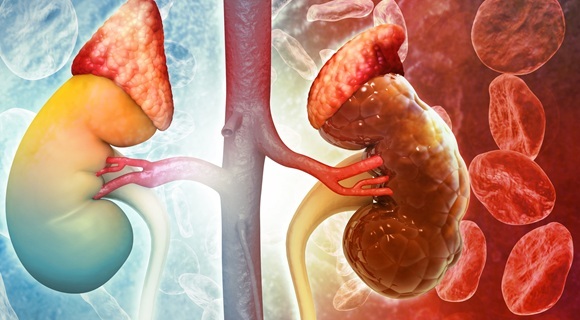A Mucin Protein Is a New Prognostic Biomarker for Chronic Obstructive Pulmonary Disease
By LabMedica International staff writers
Posted on 15 Jun 2021
The mucin protein MUC5AC has been shown to be a novel biomarker for chronic obstructive pulmonary disease (COPD) prognosis and for testing the efficacy of potential therapeutic agents.Posted on 15 Jun 2021
COPD is an inflammatory lung disease that causes obstructed airflow from the lungs and affects about 16 million people in the USA. Symptoms include breathing difficulty, coughing, mucus production, and wheezing. Development of COPD has been linked to long-term exposure to irritants and especially to cigarette smoking.

Image: Mucin proteins (green) in a sample of airway mucus (Photo courtesy of University of North Carolina)
Investigators at the University of North Carolina (Chapel Hill, USA) previously described the contributions of increased total airway mucin concentrations to the pathogenesis and diagnosis of the chronic bronchitic component of COPD.
In the current study, they investigated the relative contribution of each of the major airway gel-forming mucins, MUC5AC and MUC5B, to the initiation, progression, and early diagnosis of airways disease in COPD. Over the course of the study, they used stable isotope-labelled mass spectrometry to measure levels of MUC5AC and MUC5B in induced sputum samples taken from 331 participants (mean age 63 years) in the multicenter SPIROMICS study, of whom 40 were healthy nonsmokers, 90 were at-risk smokers, and 201 were smokers with COPD. Participants were extensively characterized using results from a variety of questionnaires,
Results revealed that increased MUC5AC concentrations were more reliably associated with manifestations of COPD than were MUC5B concentrations. Increased MUC5AC, but not MUC5B, concentration at baseline was a significant predictor of COPD progression during the three-year follow-up period. Moreover, current smokers in the at-risk group showed raised MUC5AC concentrations at initial visits and decreased lung function over three years. By contrast, former smokers in the at-risk group showed normal MUC5AC concentrations at the initial visit and preserved lung function over three years.
"Currently, we cannot forecast which individuals in the at-risk smokers group will progress to COPD because we do not have an objective biological marker to underpin the disease-causing pathways. Our research shows that MUC5AC could be a predictor of who will develop COPD from the large group of aging "at-risk" smokers," said senior author Dr. Mehmet Kesimer, professor of pathology and laboratory medicine at the University of North Carolina. "We think MUC5AC could be a new biomarker for COPD prognosis and it could be a biomarker for testing the effectiveness of therapeutic strategies. Our data indicate that increased MUC5AC concentrations in the airways may contribute to the initiation of COPD, as well as disease progression, symptom exacerbation, and how the disease progresses over time, in general. We did not observe the same association with MUC5B."
The study was published in the May 28, 2021, online edition of the journal The Lancet Respiratory Medicine.
Related Links:
University of North Carolina














